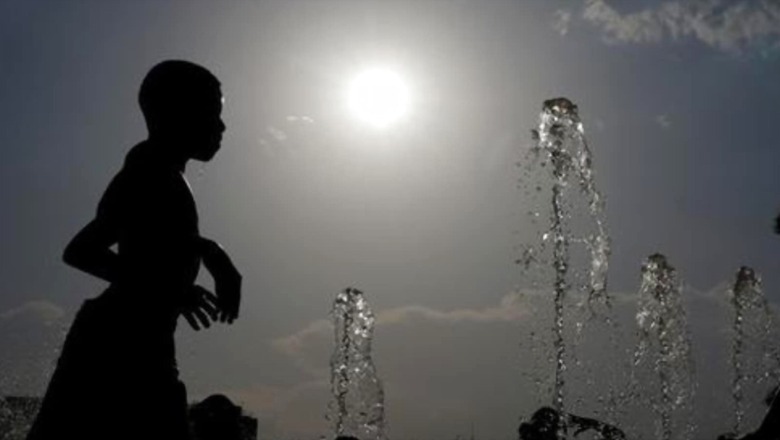
views
Yet, the extreme heat that this country of 1.3 billion battles with is still to be declared a “nationally notified disaster”.
This is pertinent, especially because of the glaring climate change warnings, threatening to make these heatwaves more frequent, and more intense in the near future.
The government’s Disaster Management Act, 2005, defines disaster as “a catastrophe, mishap, calamity or grave occurrence in any area, arising from natural or manmade causes, or by accident or negligence which results in substantial loss of life or human suffering or damage to, and destruction of, property, or damage to, or degradation of, environment, and is of such a nature or magnitude as to be beyond the coping capacity of the community of the affected area”.
With the hottest March and April in a century, the prolonged heatwave that swept India this summer has been no less.
However, government data indicates how increased awareness over the years has drastically brought heat-stress-related mortality down from over 2,000 in 2015 to 495 in 2019.
The numbers could perhaps be just the tip of the iceberg, considering the challenges in attributing a death to heat stress. But even if the number of fatalities has plummeted, should it be the only quantifiable indicator for a “nationally notified disaster”?
In the last three months, people across cities and villages in India have struggled to wade through their normal work routines in the unrelenting heat which was evidently beyond their coping capacity. The electricity demand soared to an all-time high and outstripped the available energy supply, compelling the government to cancel passenger trains to transport coal rakes to keep the power plants running. The summer is on, and there are apprehensions of another power crisis.
All this at a time when the country is gearing up for its next agricultural season – and power is crucial to meet the irrigation needs of states, some of which are heavily dependent on groundwater. Farmers are still recovering from a sub-par harvest of the Rabi season worsened by an unexpected early spell of heatwave.
Clearly, it is not just a human health hazard but a “disaster” on a national scale that can potentially disrupt the entire economic operations with its far-reaching impacts.
Heatwave expert Anup Kumar Srivastava, a senior consultant at the National Disaster Management Authority (NDMA), says the issue has been discussed by the Finance Commission in the past after recommendations by several states. “It was decided that a provision be made for the state governments to include ‘heatwave’ as a ‘local disaster’ in their list and enable them to use 10% of the State Disaster Response Fund for relief and rescue. In fact, a national disaster mitigation fund and a state disaster mitigation fund have also been created recently to support community-based measures. At least 17 states have set up these funds,” he said.
Seven states including Odisha, Kerala, Maharashtra, and Andhra Pradesh have so far listed listed heatwaves as “local disaster”.
Srivastava also talks about the heat action plans that almost 150 cities have already put into place across the country.
“Extensive work has been done to create awareness, and with the help of the IMD’s impact-based early warning system, we have managed to bring down the loss of lives,” he added.
While both the Centre and states have action plans for preparedness, most of these come in the form of guidelines and advisories with no stern policy to enforce them. Declaring heatwave as a nationally notified disaster will provide attention to the grave risks that it poses to the country as a whole, and nudge every sector to develop a heat action plan. It can also make way for ex-gratia or compensation to kin of those who died due to heatwaves.
And, awareness may have increased, but the risks have exacerbated too.
In 2015, there were just nine heat-prone states. That number has jumped to 23. This year, over 16 states/UTs from Jammu and Kashmir to Maharashtra and Gujarat to Jharkhand were impacted by heatwaves.
With climate change staring us in the face, matters will become worse. It is time that we take a relook at the way we react and respond to these extreme weather events. A countrywide long-term strategy with a single-focus plan could help us prepare better when the “disaster” strikes next.
“We began the work with low-hanging fruits – creating awareness, strengthening capacity building, hospital preparedness, treatment facilities, early warning systems, and coordination with agencies to protect the most vulnerable people. But, now we have to plan and implement solutions for the long run,” said assistant professor Abhiyant Tiwari, programme manager at the Gujarat Institute of Disaster Management, Gandhinagar. “The world is dangerously close to 1.5-degree warming, and this year’s heatwave has already given us a terrifying glimpse into what the future might hold. We not only have to adapt but also mitigate.”
Read all the Latest News , Breaking News , watch Top Videos and Live TV here.



















Comments
0 comment